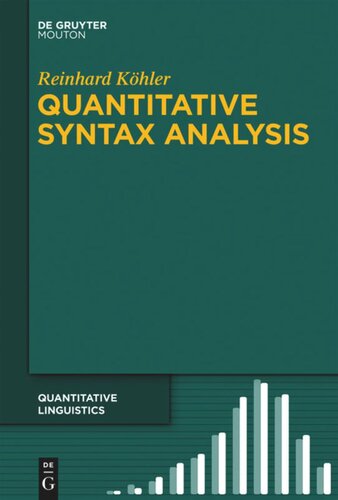

Most ebook files are in PDF format, so you can easily read them using various software such as Foxit Reader or directly on the Google Chrome browser.
Some ebook files are released by publishers in other formats such as .awz, .mobi, .epub, .fb2, etc. You may need to install specific software to read these formats on mobile/PC, such as Calibre.
Please read the tutorial at this link: https://ebookbell.com/faq
We offer FREE conversion to the popular formats you request; however, this may take some time. Therefore, right after payment, please email us, and we will try to provide the service as quickly as possible.
For some exceptional file formats or broken links (if any), please refrain from opening any disputes. Instead, email us first, and we will try to assist within a maximum of 6 hours.
EbookBell Team

4.8
34 reviews This is the first book which brings together the fields of theoretical and empirical studies in syntax on the one hand and the methodology of quantitative linguistics on the other hand. The author provides the theoretical background for this enterprise on the basis of the philosophy of science and of linguistic considerations including a discussion of Chomsky’s attitude against the application of statistical methods to syntactic phenomena. He gives a short introduction into the aims and methods of the quantitative approach to linguistics in general and to syntax in particular. The following chapters inform the reader about the measurement of syntactic properties, possibilities to acquire empirical data from syntactically annotated text corpora and the most common mathematical models and methods for the analysis of syntactic and syntagmatic material. Then, a number of prominent approaches and hypotheses about interrelations between properties of syntactic constructions are presented and evaluated on material from various languages and text kinds. Finally, the theory of synergetic linguistics and its application to syntax is introduced including the integration of such famous hypotheses as Yngve’s depth hypothesis and Hawkins’s "Early immediate constituent" principle. The book concludes with a number of perspectives with respect to follow-up studies and extensions to the presented models with interfaces to neighbouring disciplines.